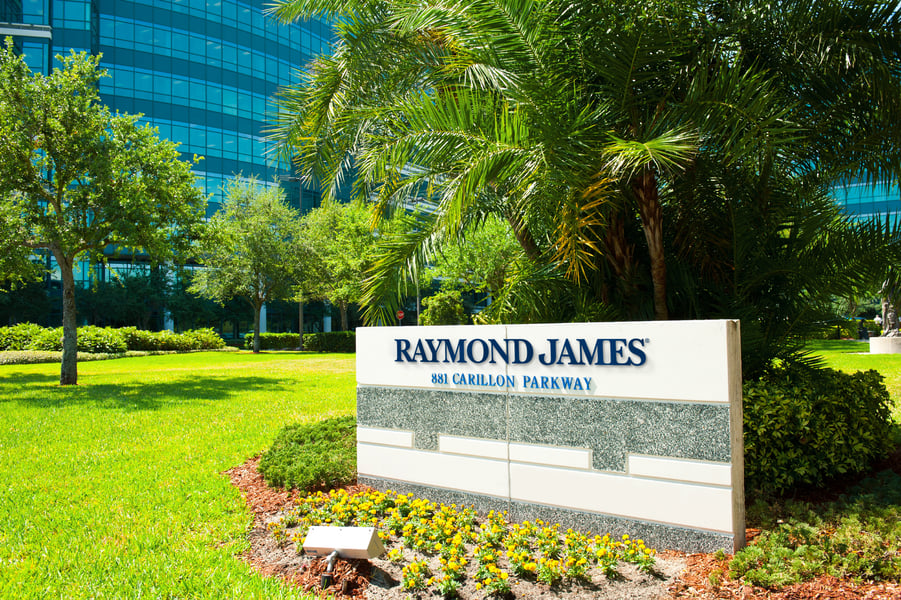Overall, adviser moves are down 46% compared with the same quarter in 2015.
Raymond James Financial Inc. rose above rivals in attracting financial advisers amid a slowdown in recruitment during the second quarter.
The brokerage firm picked up almost $1.9 billion in assets through the recruitment of eight teams, while losing none, according to data gathered by InvestmentNews. That was the biggest net gain among advisers for the quarter. A total of 65 teams changed firms, down 25% from the first three months of 2016 and 46% from the second quarter of last year, the data show.
With so many big teams moving in the past year, and the tumult created by Brexit and the Labor Department's new fiduciary rule, a pause isn't surprising, according to Danny Sarch, president of recruiting firm Leitner Sarch Consultants.
“There's bound to be a hangover,” he said. “There's a lot of distraction.”
While Raymond James gained about half the amount of assets in the second quarter as it added during the first, the firm kept roughly the same pace in terms of the number of teams it recruited, according to InvestmentNews data.
“We meet with people one-on-one and we give them a lot of time,” said Barry Papa, director of adviser choice consulting for the St. Petersburg, Fla.-based brokerage firm. “We try to solve the current challenge they're facing at their current firm.”
The largest team Raymond James recruited during the second quarter was a $332 million group in Boston from Morgan Stanley, according to InvestmentNews data. The brokerage firm picked up three other Morgan Stanley teams in Chicago, San Rafael, Calif., and El Paso, Texas, for a combined $640 million in assets.
Raymond James also recruited financial advisers from William Blair & Co., UBS Group AG, Wells Fargo & Co. and Cambridge Investment Research Inc. Except for the brokers from Cambridge, all of the eight teams joined the firm's employee channel.
Mr. Papa said “one of the big strains in the business today” is the treatment of smaller accounts. Some firms, such as the wirehouses, won't pay advisers for accounts under $250,000, which can pose a dilemma for those looking to assist a family member of a high-net-worth household they're advising, he said.
“A lot of advisers want more freedom and control, and that's what we give them,” Mr. Papa said. “One of our core values is independence. It means giving them more control over how they run their practice.”
OWNING BOOK OF BUSINESS
One way Raymond James stands apart from the wirehouses is that it permits advisers to own their books of business — a distinction that helps the firm keep advisers once they're recruited, according to Mr. Papa. The firm also offers a lot of support to advisers looking to market and brand themselves over social media, including Twitter and LinkedIn, he said.
One big question mark in the industry right now is how firms will help advisers comply with the DOL fiduciary rule issued in April. The new regulation, which requires financial advisers to act in the best interests of their clients in retirement accounts, must be implemented by April 2017. Full compliance is mandatory by January 2018.
“We're putting a lot of effort into the DOL,” said Mr. Papa, adding that advisers considering changing firms want to know if their potential employers will be set up to help them use the rule's best-interest contract. “Those are the things we're working through.”
As advisers brace for the new regulation, they've also navigated volatile markets this year. The United Kingdom's June 23 vote to leave the European Union initially roiled markets and created losses globally before the market rallied back.
WAIT-AND-SEE
The event was anxiously watched weeks in advance, possibly a factor in some advisers taking a wait-and-see stance before executing on any moves. After the vote, retirement plan providers including Fidelity Investments had a surge of calls from people worried about their savings.
“If their clients don't feel comfortable, they just don't feel comfortable moving,” said Mr. Sarch, who added that it generally can take six months to a year before a large team executes on a decision to move.
The biggest move during the second quarter was a $1.2 billion five-person team led by Andrew Zimmerman that left Morgan Stanley to join Bank of America Merrill Lynch, according to InvestmentNews data.
The top moves in the first half of 2015 were at least $3 billion, more than double, or in some cases triple, the assets managed by the largest teams to change firms this year.







